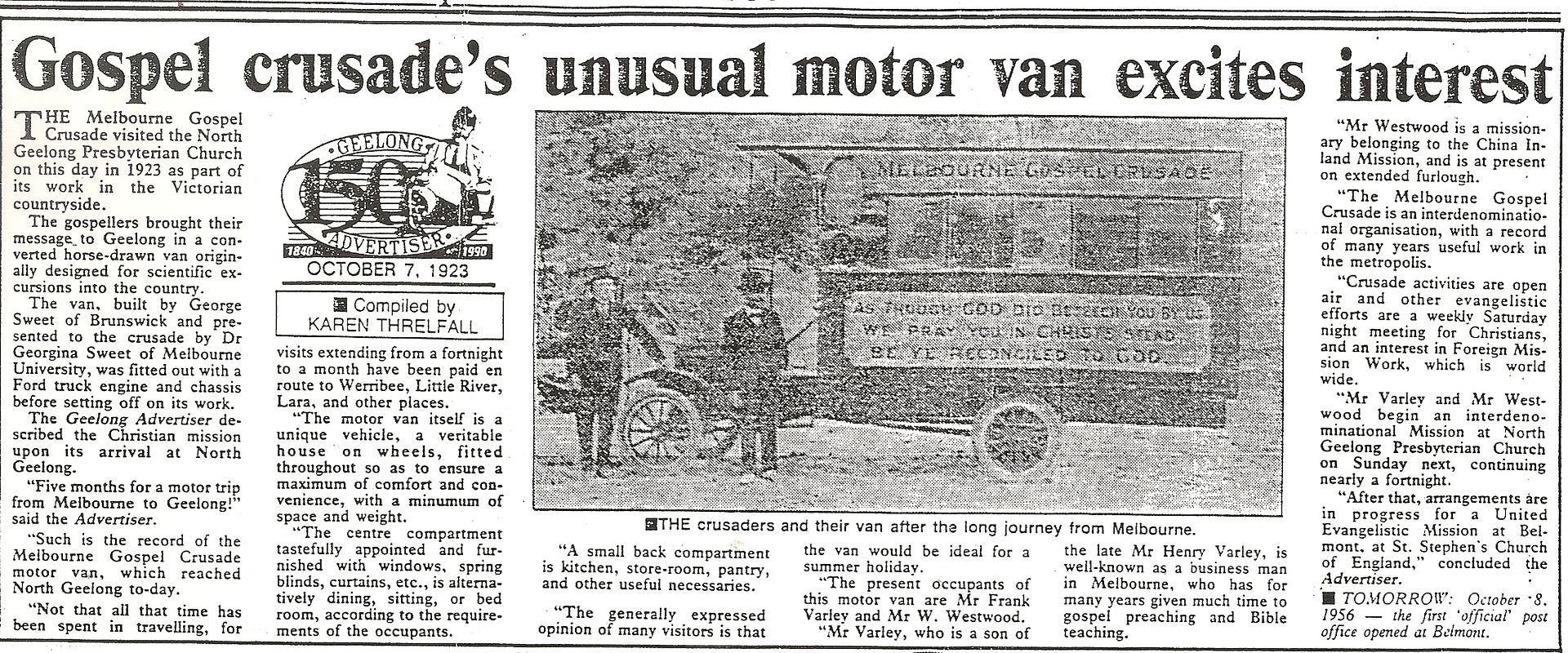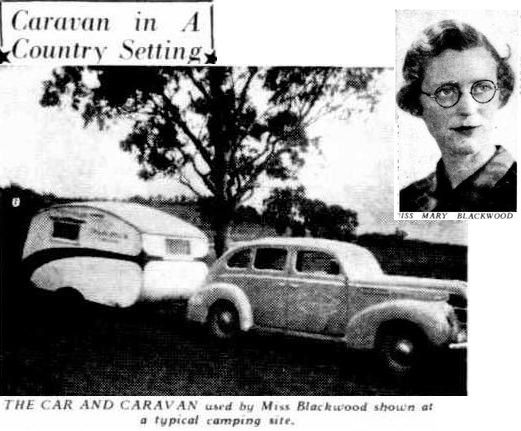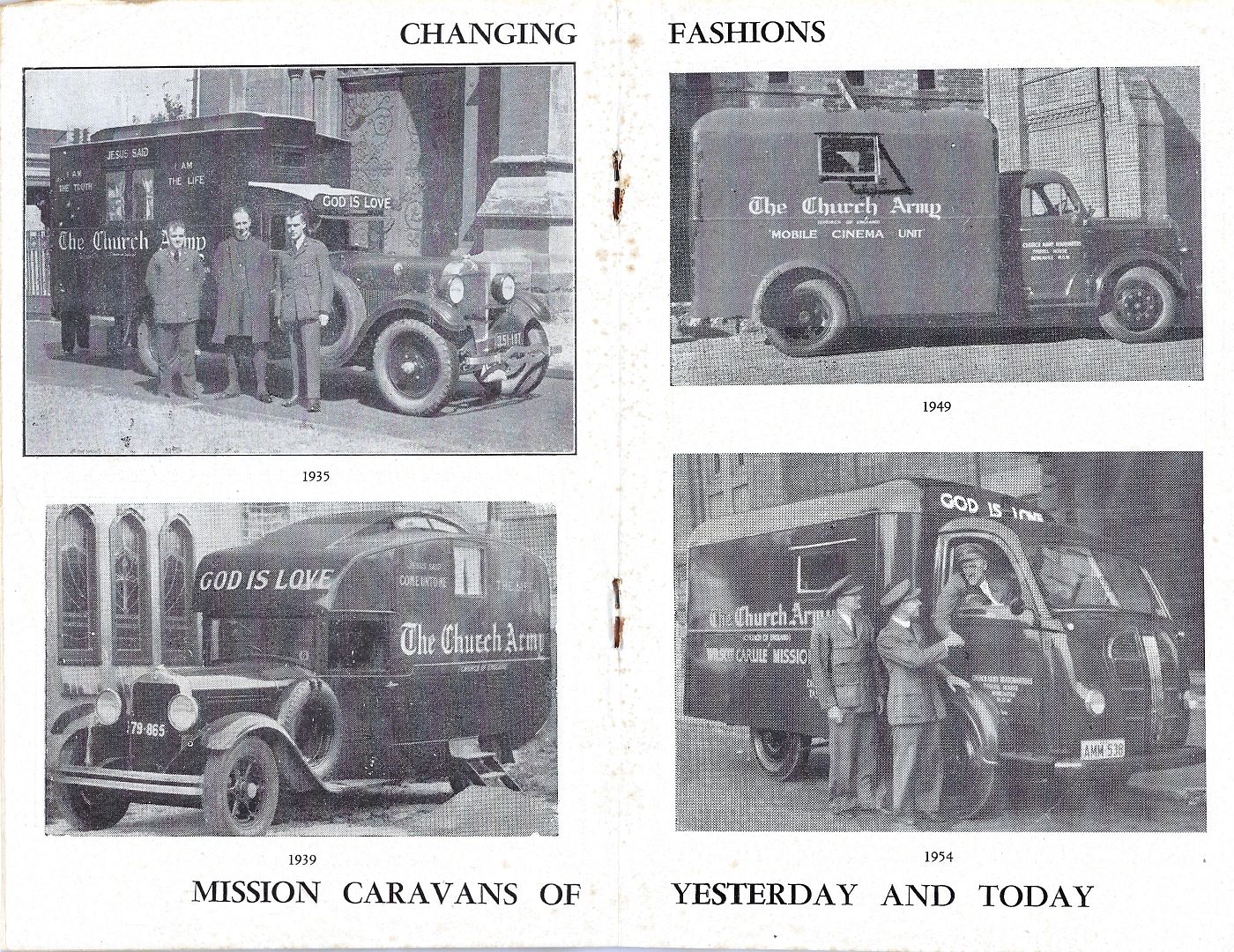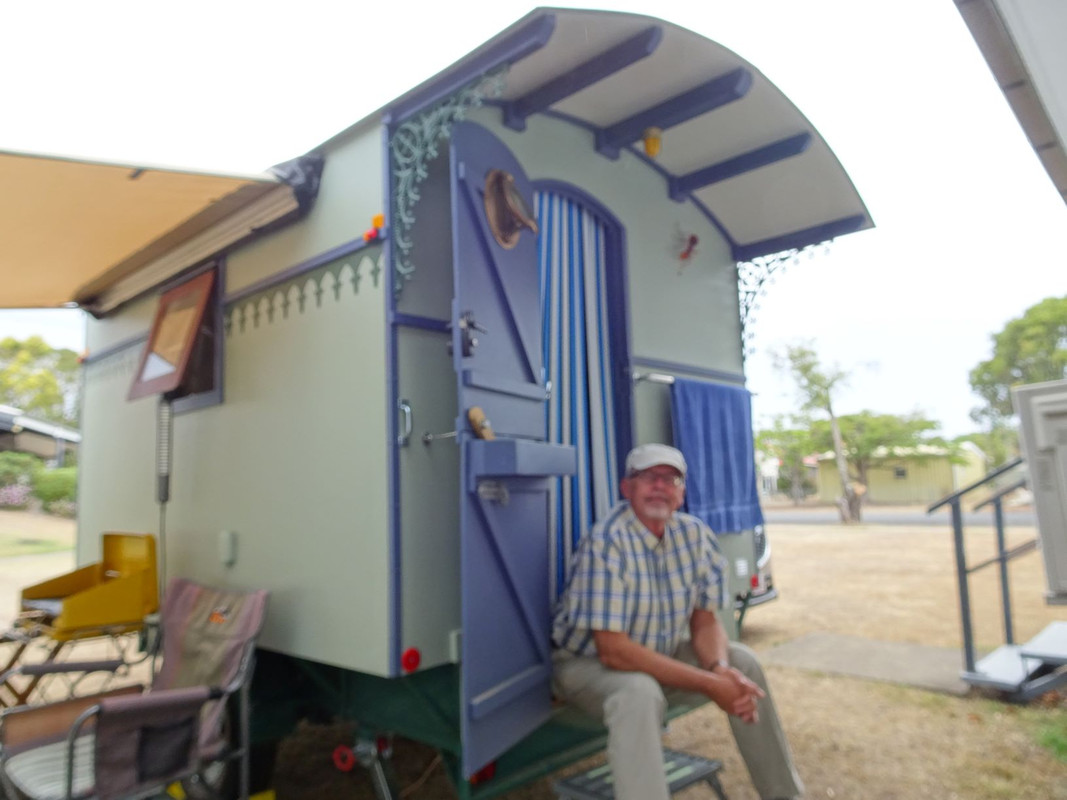Post by Don Ricardo on Apr 10, 2017 21:36:57 GMT 10
Hi caravan history buffs,
As you read through newspaper articles about caravanning from the 20's and 30's, it becomes apparent that one of the groups of people who used caravans extensively during that period was the men and women undertaking various types of church work, including community outreach and visitation. Some of the workers covered impressive mileages over what was at times pretty rough and remote territory.
The following article published in the Geelong Advertiser in October 1991, was given to me by a friend and former colleague, and provides an edited version of an article originally printed in the 'Addy' on Thursday, 4 October 1923. The article reports on a 'motor caravan' used by two men belonging to the Melbourne Gospel Crusade (MGC), who visited Geelong on several occasions in 1923 and 1924:

(Source: Geelong Advertiser, Monday 7 October 1991, page 6)
The motor caravan in question is of particular interest because it is amongst the earliest Australian examples of such vehicles we are aware of, and also because the caravan cabin was originally built to be drawn by horses, and was only later mounted on a T-model Ford truck chassis. The caravan therefore straddled the transition from horse drawn transport to motor vehicles.
The article describes the caravan thus:
"The centre compartment tastefully appointed and furnished with windows, spring blinds, curtains, etc., is alternatively dining, sitting, or bed room, according to the requirements of the occupants.
"A small back room compartment is kitchen, store-room, pantry, and other useful necessaries.
"The generally expressed opinion of many visitors is that the van would be ideal for a summer holiday."
The history of the caravan is reported in a book written by the friend who gave me the article:
"Early in 1922, a large van built by George Sweet of Brunswick was presented to the MGC by Dr Georgina Sweet. Dr Sweet was an Australian zoologist who was the first woman to graduate with a Doctor of Science degree from the University of Melbourne and the first female Acting Professor in an Australian university. The van was originally designed for scientific excursions and was given by Dr Sweet...to the MGC 'for evangelistic work in the country'...The van was designed to be pulled by two horses...However, the size and weight of the van was a practical concern for country work. With motor transport now available, the [MGC] council decided to adapt the van for placing on a motor chassis...It was resolved...to place an order for a Ford chassis at £165...".
As it turned out, although the MGC motor caravan was used for a number of trips to various places, it proved not to be wholly satisfactory: "Although the missions in the Geelong area were very well received, the van proved to be unstable in certain conditions. [It was later recalled] that its length had placed too much weight at the rear; on one occasion when going up a steep hill, it sat on its rear end! The MGC Council immediately had the van checked by experts who declared it to be 'dangerous for any road work and always liable to capsize'. As a result, the Council took the van off the road." Steps were then taken to build a more stable and suitable van for MGC work.
(Source: Extracts from W Renshaw, Marvellous Melbourne and Spiritual Power, Acorn Press, 2015, pages 152-156)
In fact, it seems that the accident involving the MGC motor caravan was even more dramatic than the above report suggests. Another article printed in the Geelong Advertiser on Saturday, 9 February 1924 (page 7), informed its readers:
"Many persons in Geelong will remember the Gospel Motor Van which in the latter months of last year was for several, weeks in our city and neighborhood in the charge of Mr. Frank Varley, evangelist, of the Melbourne Gospel Crusade. Returning to Melbourne before Christmas, Mr. Varley was with the van at the annual convention at Upwey. On the way back to Melbourne after the convention, an accident happened which, but for the providential mercy of God, might have had tragic consequences. Driving up a steep hill, the engine stopped, and the brakes would not hold. Mr. Varley got out, hoping to chock the wheels, but the grade was too steep. The van ran back some distance and capsized. Mrs. Varley, who was with her husband, was thrown out, but not injured beyond bruises and shock. Expert opinion now declares the van an unsafe driving proposition, the body being too large and heavy for the chassis. The Gospel Van is therefore out of commission until a new suitable body can be built."
(Source: National Library of Australia nla.gov.au/nla.news-article165986154 )
Such were the travails of some of our early Australian caravanners!
Don Ricardo
As you read through newspaper articles about caravanning from the 20's and 30's, it becomes apparent that one of the groups of people who used caravans extensively during that period was the men and women undertaking various types of church work, including community outreach and visitation. Some of the workers covered impressive mileages over what was at times pretty rough and remote territory.
The following article published in the Geelong Advertiser in October 1991, was given to me by a friend and former colleague, and provides an edited version of an article originally printed in the 'Addy' on Thursday, 4 October 1923. The article reports on a 'motor caravan' used by two men belonging to the Melbourne Gospel Crusade (MGC), who visited Geelong on several occasions in 1923 and 1924:

(Source: Geelong Advertiser, Monday 7 October 1991, page 6)
The motor caravan in question is of particular interest because it is amongst the earliest Australian examples of such vehicles we are aware of, and also because the caravan cabin was originally built to be drawn by horses, and was only later mounted on a T-model Ford truck chassis. The caravan therefore straddled the transition from horse drawn transport to motor vehicles.
The article describes the caravan thus:
"The centre compartment tastefully appointed and furnished with windows, spring blinds, curtains, etc., is alternatively dining, sitting, or bed room, according to the requirements of the occupants.
"A small back room compartment is kitchen, store-room, pantry, and other useful necessaries.
"The generally expressed opinion of many visitors is that the van would be ideal for a summer holiday."
The history of the caravan is reported in a book written by the friend who gave me the article:
"Early in 1922, a large van built by George Sweet of Brunswick was presented to the MGC by Dr Georgina Sweet. Dr Sweet was an Australian zoologist who was the first woman to graduate with a Doctor of Science degree from the University of Melbourne and the first female Acting Professor in an Australian university. The van was originally designed for scientific excursions and was given by Dr Sweet...to the MGC 'for evangelistic work in the country'...The van was designed to be pulled by two horses...However, the size and weight of the van was a practical concern for country work. With motor transport now available, the [MGC] council decided to adapt the van for placing on a motor chassis...It was resolved...to place an order for a Ford chassis at £165...".
As it turned out, although the MGC motor caravan was used for a number of trips to various places, it proved not to be wholly satisfactory: "Although the missions in the Geelong area were very well received, the van proved to be unstable in certain conditions. [It was later recalled] that its length had placed too much weight at the rear; on one occasion when going up a steep hill, it sat on its rear end! The MGC Council immediately had the van checked by experts who declared it to be 'dangerous for any road work and always liable to capsize'. As a result, the Council took the van off the road." Steps were then taken to build a more stable and suitable van for MGC work.
(Source: Extracts from W Renshaw, Marvellous Melbourne and Spiritual Power, Acorn Press, 2015, pages 152-156)
In fact, it seems that the accident involving the MGC motor caravan was even more dramatic than the above report suggests. Another article printed in the Geelong Advertiser on Saturday, 9 February 1924 (page 7), informed its readers:
"Many persons in Geelong will remember the Gospel Motor Van which in the latter months of last year was for several, weeks in our city and neighborhood in the charge of Mr. Frank Varley, evangelist, of the Melbourne Gospel Crusade. Returning to Melbourne before Christmas, Mr. Varley was with the van at the annual convention at Upwey. On the way back to Melbourne after the convention, an accident happened which, but for the providential mercy of God, might have had tragic consequences. Driving up a steep hill, the engine stopped, and the brakes would not hold. Mr. Varley got out, hoping to chock the wheels, but the grade was too steep. The van ran back some distance and capsized. Mrs. Varley, who was with her husband, was thrown out, but not injured beyond bruises and shock. Expert opinion now declares the van an unsafe driving proposition, the body being too large and heavy for the chassis. The Gospel Van is therefore out of commission until a new suitable body can be built."
(Source: National Library of Australia nla.gov.au/nla.news-article165986154 )
Such were the travails of some of our early Australian caravanners!
Don Ricardo













